Antlia Solar Discover Dualband (Ha, CaK and CaH) Filter Assembly
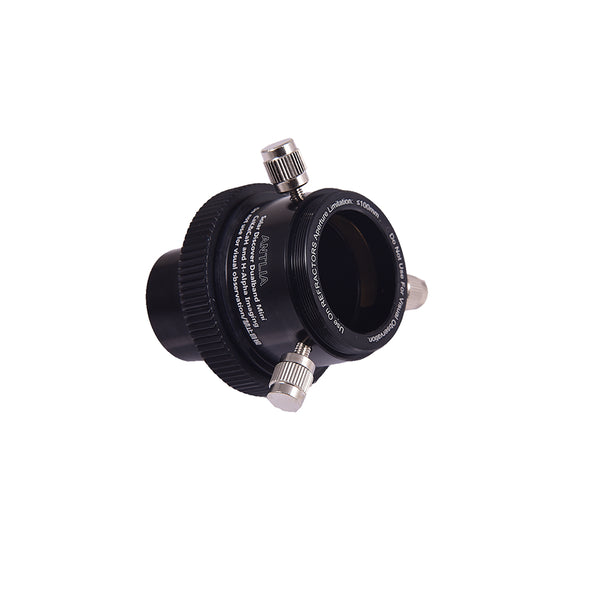

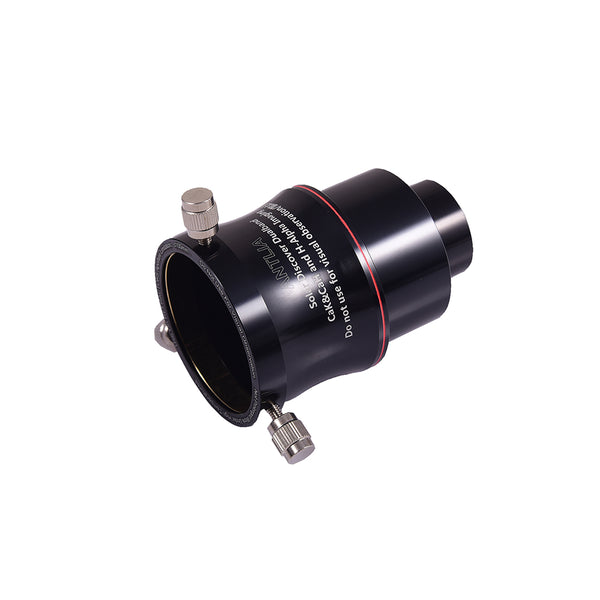
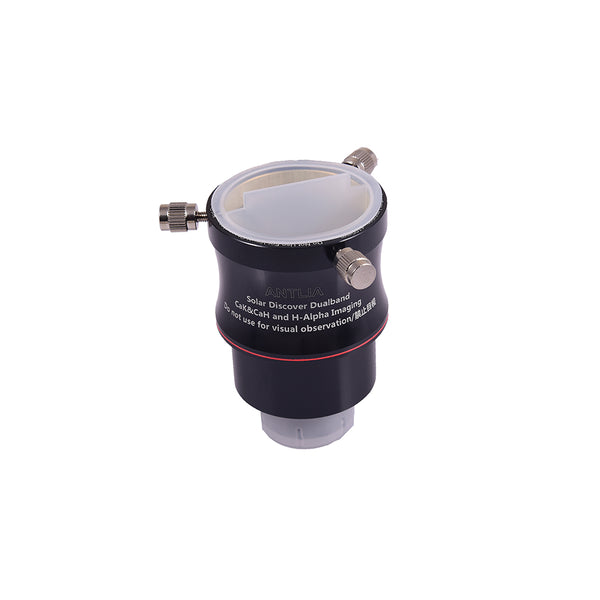
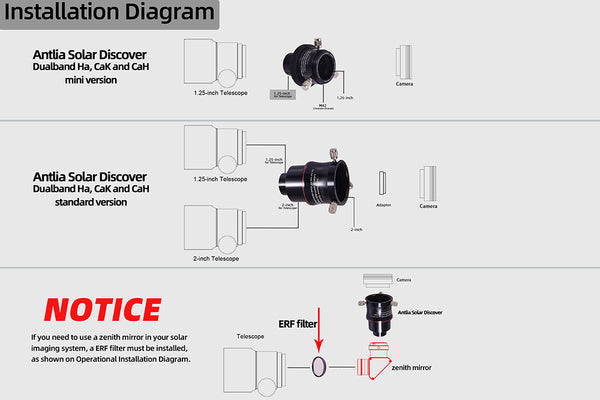
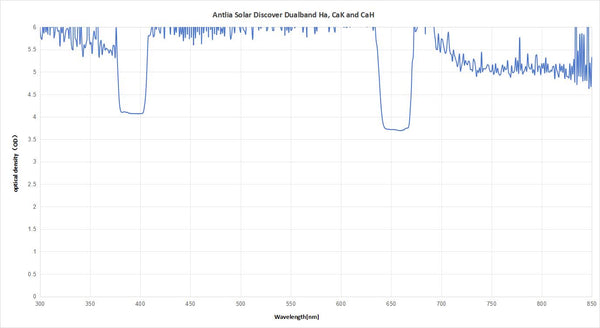








Antlia Solar Discover Dualband (Ha, CaK and CaH) Filter Assembly
Size
Why Purchase from All-Star Telescope?
Free Expert Support
Whether you are a first timer needing help with setting up or an enthusiast that can't quite make that one thing work, our expert staff are ready to support your needs. With decades of knowledge and first hand experience we've been there and we can help you through it!
Stress Free, Secure Transactions
You can trust purchasing and delivery with All-Star Telescope. All of our transactions are 100% secure and Level 1 PCI DSS compliant thanks to Shopify's ShopPay platform. For additional protection, we insure 100% of the value of every shipment we make. If it get's lost during shipment, we replace it. If it gets damaged during shipment, we repalce it. We make sure your product arrives exactly as you would expect it to; we promise.
We also ensure privacy protection. We never keep any of your credit card information on file and any of your personal data is stored accordign to our policies.
30 Day Return Policy
Buy with confidence knowing that we accept returns up to 30 days after purchase. We want you to have something you will actually use and we are confident that we keep good quality products in our store with No Junk.
Price Match Promise
Shipping around for the best price is tough, we make it easier by offering the best pricing in the market. But if you find a better price on an in-store item somewhere else we will match it!
Recommended Accessories
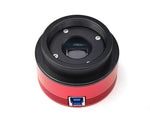
ZWO ASI174MM USB3.0 Monochrome Camera (ASI...
This little camera is fantastic for guiding and maybe even better for solar imaging. We use one here in the shop on our solar rig.

ZWO ASI174MM USB3.0 Monochrome Camera (ASI174MM)
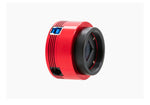
ZWO ASI585MC Planetary Colour Camera (ASI5...
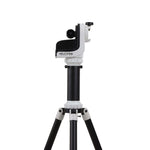
Sky-Watcher SolarQuest Mount (S21170)
These are fantastic mounts. They use built in GPS and a camera to have your telescope find and follow the sun. All you have to do is turn it on. We...

Sky-Watcher SolarQuest Mount (S21170)
Product Description
The Antlia Solar Discover Dualband (Ha, CaK, and CaH) filter assembly comes in both standard and mini versions. It is specifically designed for solar photosphere photography, effectively enhancing contrast and sharpness in solar imaging. This results in greater visibility of surface details and highlights of sunspots, while also providing higher contrast for solar faculae.
The complete assembly comes with a Antlia Energy Rejection Filter (ERF) filter, functions to block UV and IR light, which allows the desired wavelengths Ha 656.3nm, CaK 393.3nm, and CaH 396.8nm to pass through.
In addition, necessary ND filter is already manufacture installed in the tube.
Product Features:
- New tube structure design is used for the Antlia Solar Discover Dualband filter assembly,installation is similar to the Antlia CaK 3nm Solar Herschel Wedge, with the telescope attached at one end and the camera at the another. The filters are assembled in a fully closed tube and the metal tube machined from aircraft aluminum CNN and oxidized. No stray light can escape from this.
- Compared to other solar reducing films, the Antlia Solar Discover Dualband filter assembly offers superior advantages: it enables higher contrast for solar imaging, higher resolution of the solar surface, and the design less susceptible to wear and tear. Additionally, it's user-friendly, ensuring ease of use, and boasts an extended lifespan for your equipments used for solar imaging.
- It can be directly used for solar Photosphere imaging, such as sunspots.
- 1.25" and 2" Adapters
The Antlia Solar Discover Dualband Ha, CaK and CaH filter assembly combines the 1.25'' and 2'' adapter used in astrophotography for easier and faster connection of telescopes and cameras. The standard version is compatible with both 1.25'' and 2'' adapters, while the mini version is designed with 1.25'' adapter.
Important Notes:
- When you are using a zenith mirror, the ERF filter must be installed in the correct position for safe operation. Please refer to the installation diagram.
- When you are using a telescope with an aperture >100mm, you need to use additional light reduction solutions, such as ERF filters,solar safety films, lowering the telescope aperture for safe operation while using Solar Discover Dualband Ha, CaK and CaH filter Assembly; If without the extra light reduction solution, the Solar Discover Discover Dualband Assembly can only used with REFRACTORS up to 100mm aperture.
About Visual Observation
- The IR coating range of our products is slightly different from the ISO 12312-2 Standard for Solar Viewers, please see the following chart and refer to ISO 12312-2 Standard for Solar Viewers (https://eclipse.aas.org/eye-safety/iso12312-2).
- For tough technical requirements and safety considerations, we do not recommend Solar Discover Dualband Ha, CaK and CaH filter assembly for visual observation. If you need to use the product for visual observation, it is important to ensure that all filters built into the assembly are in good condition for safety.
Warranty: 3-years
Disassembly of the assembly is prohibited and voids warranty. Any repair/returns/exchange for this item is not accepted once it has been disassembled.
Imaging Sample Photo:

Specifications
|
ISO12312-2 Transmittance Requirements |
Antlia Transmittance Requirements (Solar Discover 5Å CaK, Solar Discover 3nm CaK Assembly,Dualband Ha, CaK and CaH filter Assembly,ERF) |
||
|
Requirements |
Value |
Wavelength Range |
Wavelength Range |
|
Tmax% |
0.0032% |
380-780nm |
380-780nm |
|
Tmin% |
0.000061% |
||
|
Tmax%(UVB) |
0.0032% |
280-315nm |
280-315nm |
|
Tmax%(UVA) |
0.0032% |
315-380nm |
315-380nm |
|
Tmax%(IR) |
3% |
780-2000nm |
780-1700nm |

Product Installation Diagram

Additional Articles, Videos, and Links
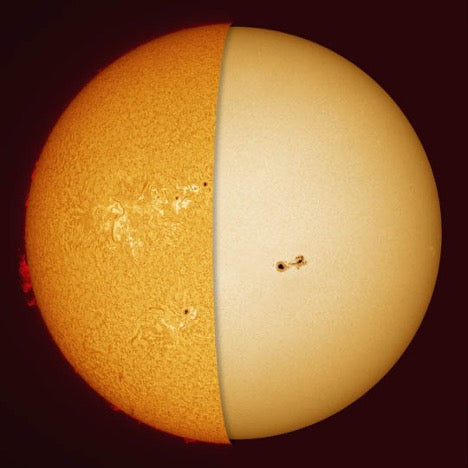
Go Ahead, Look at the Sun (With the Right Equipment)
Solar observation and solar photography are a lot of fun with the right equipment, and this is a great time to start. Every 11 years the Sun’s magnetic field completely flips. That means that the...
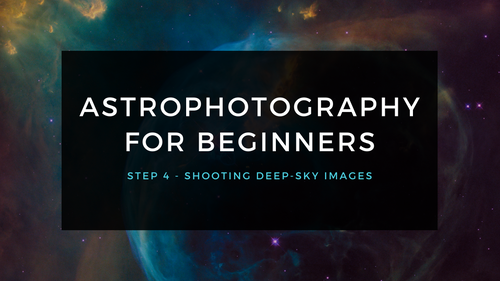
Astrophotography for Beginners Step 4: Shooting Deep-Sky Images
Taking deep sky pictures can be daunting, luckily there is an easy process to follow to allow you to get great shots! Here is the typical process for actually taking deep-sky images in the field.
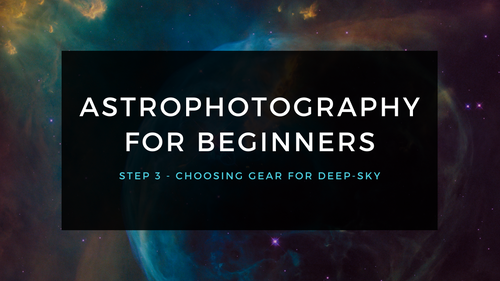
Astrophotography for Beginners Step 3: Choosing Gear for Deep-Sky Imaging
Using a star tracker gains you experience with the fundamentals of deep-sky imaging. Shooting the Moon gains you experience focusing and framing through your telescope. Through your sessions you’ll...
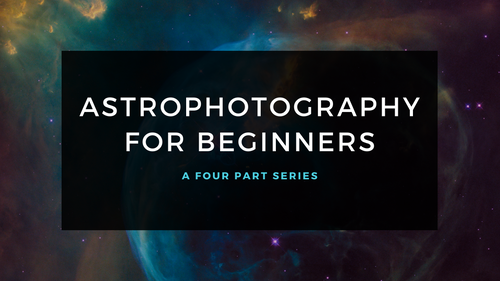
Astrophotography for Beginners - Start Here: Getting into Astrophotography Step by Step
Shooting the night sky has never been more popular, nor easier. The choice of equipment has also never been better, or more affordable. However, as per the advice given by Dickinson and Dyer in the...
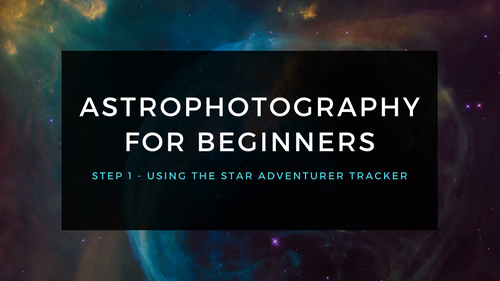
Astrophotography for Beginners Step 1: Using the Star Adventurer Tracker
By far the most economical and easiest way to capture beautiful images of the Milky Way and large deep-sky objects like the Andromeda Galaxy (shown here) is to use a star tracker. Here are steps an...
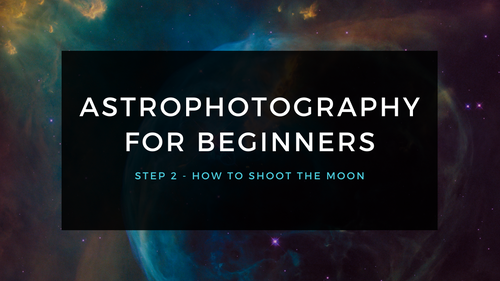
Astrophotography for Beginners Step 2: How to Shoot the Moon
Close-ups of the Moon are rewarding, and an easy way to learn to shoot through your telescope. While good results are possible with a phone camera clamped to an eyepiece (as shown below), this tuto...


